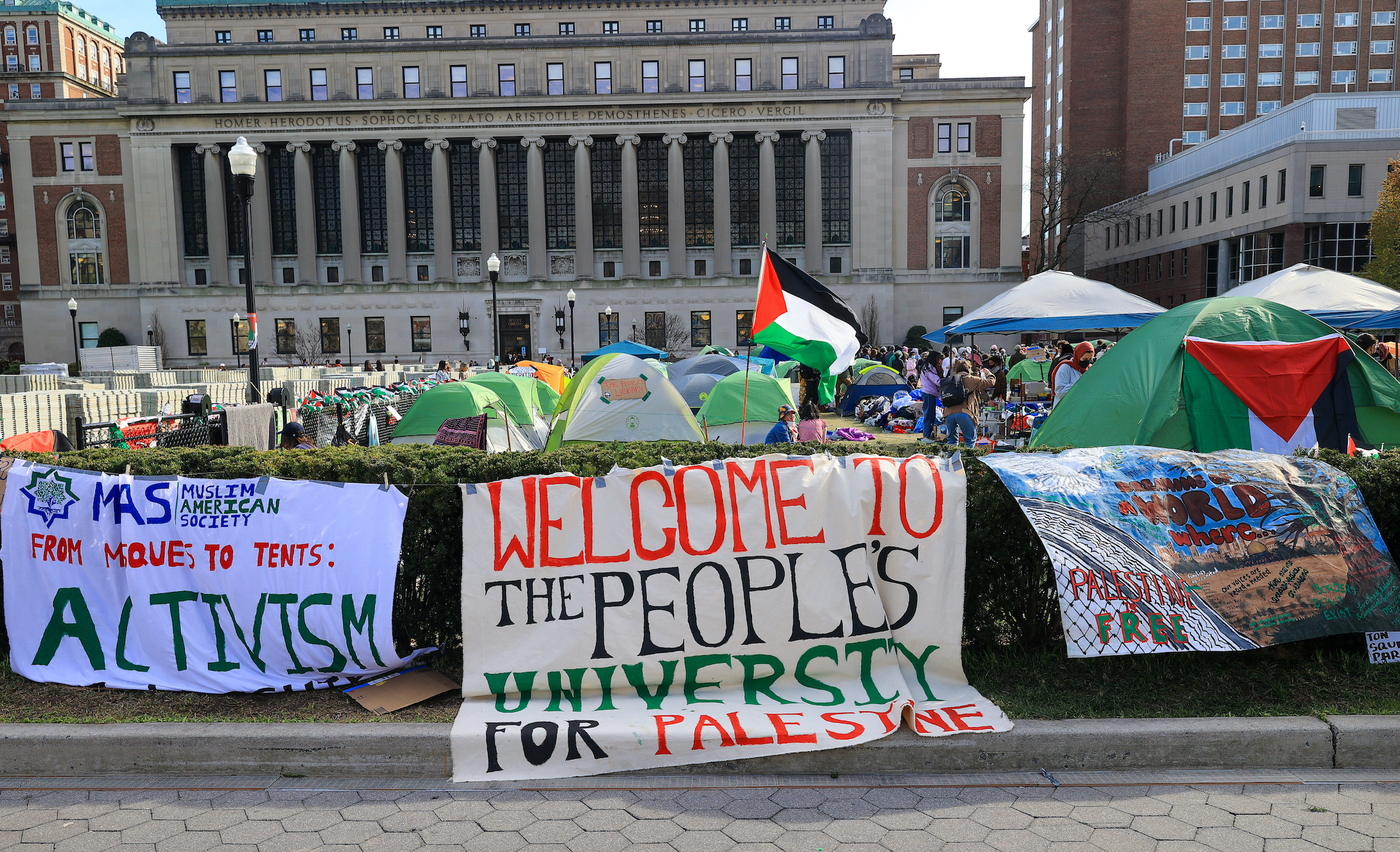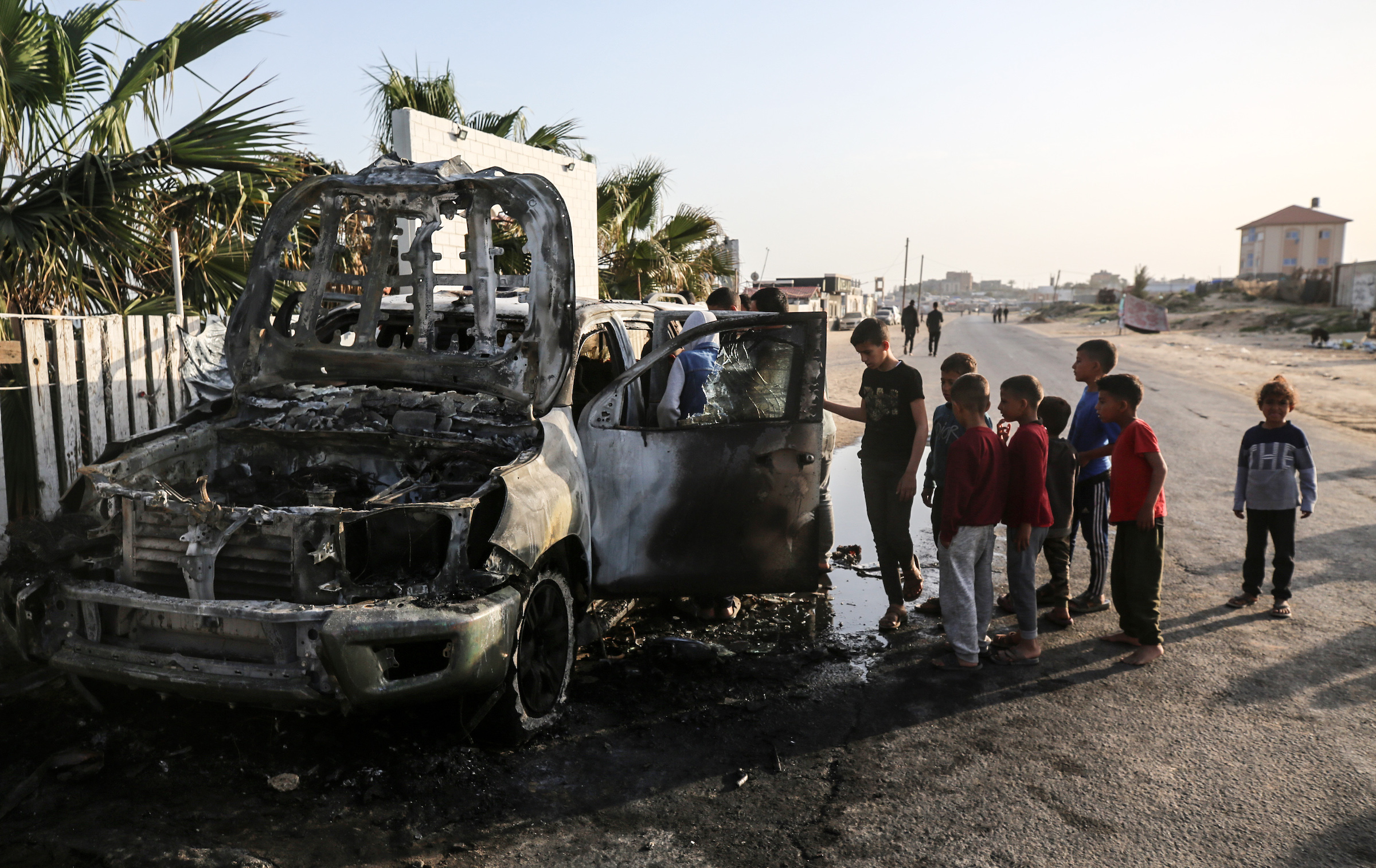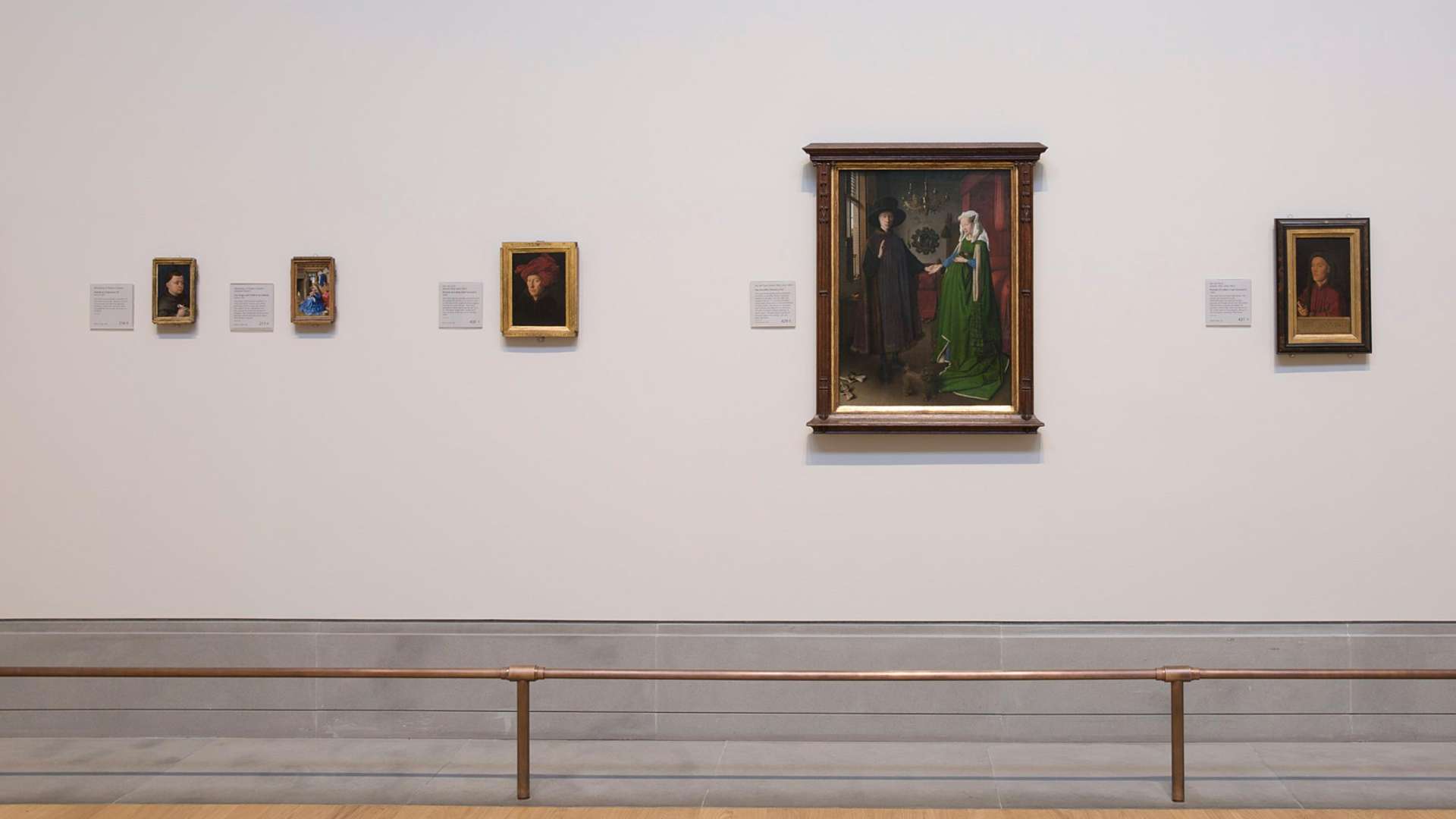The Crackdown Explains The Protest
10:49 AM EDT on April 26, 2024

At the very least, the Gaza solidarity encampment at Columbia University has successfully emphasized the absurdity of Palestine as an exception. In response to students setting up camp on a lawn, the university’s administration and many national figures have reacted so poorly that the matters of one campus in New York City have become an international phenomenon. The students want their school to financially divest from a country carrying out a genocide; the school has chosen to ignore this request and instead direct focus on hypothetical, nebulous threats.
Beginning on April 17, Columbia students created an encampment to protest until the university’s administration fulfilled five demands, which overlap with the goals of the Boycott, Divestment and Sanctions movement. Issued by the student coalition Columbia University Apartheid Divest, these demands are clearly stated and defined. The following day, university president Minouche Shafik allowed the New York Police Department to sweep the encampment and make over 100 arrests. The basis of Shafik’s decision was that the demonstration posed a “clear and present danger to the substantial functioning of the university,” even though NYPD Chief of Patrol John Chell told the student-run Columbia Daily Spectator that the protestors were all peaceful and police identified no danger. Since then, more students have gathered to build a larger encampment, and university administrators are in negotiations with CUAD, all while various politicians and media members try to score cheap points. The reason for all the noise is to drown out the actual motivation of the students.
CUAD’s mission and organization are admirable. The movement has inspired students at many other campuses to conduct their own demonstrations. It's heartening to see faculty members stand up for their students’ rights, and it's a testament to the potential of solidarity and protest. "There are no universities left in Gaza," Barnard College student Soph Askanase said, via Reuters. “So we chose to reclaim our university for the people of Palestine.” The appalling part is how plenty of older adults have flatly rejected the reality in front of them to instead frame these college students however they choose: as a group of naive, incoherent kids who don’t know what they’re doing, or perhaps a new, hyper-advanced form of protestor conniving and dangerous enough to destroy the concept of Columbia University as we know it. These concerned parents and non-parents have allowed their own anxieties to cultivate the worst-case scenario in their heads. They pretend the motivations of Columbia University Apartheid Divest are inscrutable, when it's right there in the name.
We have previously discussed when hypothetical peril is prioritized over actual slaughter, and the reaction to the Columbia encampment has provided new examples of that hysteria. As Samuel P. Catlin recently wrote for Parapraxis Magazine, the underlying concern here is that “something might happen” on campus. What that thing might be remains intentionally undefined. But it’ll be bad, and it’ll harm the children (who are actually young adults), so the administration or the cops or the National Guard have to step in and do what they must. Reprehensible politician Elise Stefanik reused this playbook, which successfully unemployed the presidents of Harvard and UPenn this past December, and now Shafik has fallen into the same cycle of impossible appeasement. It took no time at all before Stefanik and many other opportunistic Republicans called for her resignation.
It’s a lot harder to justify the killing of 34,000 Palestinians than it is to create a fantasy of future ethnic cleansing on American campuses, due to proximity and the perceived diminished value of Palestinian life. Who can think about what’s happening over there when there’s a Yale student being stabbed in the eye? Well, OK, the video actually showed that she was poked in the face with a small flag by a protesting student, and her eyes looked fine when she conducted her interview on Fox News, but still—could you imagine if she had been stabbed in the eye? “Allowing them to push the envelope is so dangerous,” Sahar Tartak said. “I am lucky that guy’s flag wasn't pointy at the end." Now that you mention it, why was that guy waving a flag in the first place?
The events of reality are insufficient for the Zionist to justify their beliefs, hence a reliance on the terrifying possibility of “something happening.” There may be no better example of this perceived threat than in a recent video showing a woman, wearing a T-shirt with “JEW” on the front and “ISRAEL” on the back, walking into the middle of a pro-Palestine demonstration at Yale University and standing there as nothing happens to her. Not receiving the desired response, she says, “Look at my face,” declares she is “not afraid,” and orders those around her to “put my face on camera.” Who is she talking to? Surely it isn’t the small group in the background holding up a “Jews For A Free Palestine” sign.
Is it ironic when these administrators borrow the tools of occupation to quash anti-occupation protests, or further evidence that these students are on the right track? In response to student and faculty solidarity with those who live on a piece of land surrounded by a blockade, NYU administrators had a barricade built at Gould Plaza. Columbia business professor Shai Davidai, a self-described Zionist, insisted Sunday night that he be let into the encampment to sit in the middle of the “pro-Hamas mob.” On Monday morning, he was barred from entering the encampment, giving him the ever-so-brief experience that a Palestinian in the West Bank might have at one of many Israeli checkpoints. Naturally, Davidai loudly announced to the assembled media that his urge to suppress others was being suppressed. Days later at Emory University, after an economics professor shouted at cops to stop violently arresting a pro-Palestine protestor, she herself was violently arrested. When a cop threw a middle-aged academic to the ground and wrenched her arm, perhaps it was in tribute to the IDF.
The alternate nightmare being projected onto Columbia’s lawn is intended to obscure the truth. While a group of Democratic representatives held a photo op after supposedly forging through the campus as if it were a war zone, admitted students who happened to be in town this past weekend expressed support for the encampment and its mission. “Before every discussion, before anything that happened, there was a preface: ‘Hey guys, we’re a campus that’s known for social activism, we’re a very diverse campus, that’s a big part of our identity,’” one prospective student told the Columbia Daily Spectator. “That’s interesting because in the same breath they’d say: ‘If they interrupt this, just know that this is not reflective of the University.’”
How long have we been taught, especially on college campuses, that there is merit to activism and protest? Students around the United States have watched what’s happened in Gaza for months and learned about what’s been done to Palestinians for years, sponsored by American dollars, and have found motivation to do what they can. They will continue to be dismissed, smeared, and punished, but it only takes the bare minimum of effort to discern who is worth taking seriously and who isn't. You need only see the line of cops, summoned by the University of Texas, brandishing their clubs while standing next to a sign that reads, "What starts here changes the world. It starts with you and what you do each day." What the cops did next showed that the institutions were prescient about hypothetical violence on campus, just not in the way they intended.
Recommended
If you liked this blog, please share it! Your referrals help Defector reach new readers, and those new readers always get a few free blogs before encountering our paywall.
Managing Editor
Stay in touch
Sign up for our free newsletter





